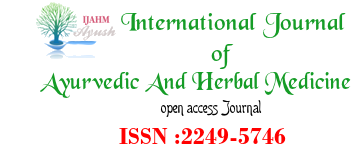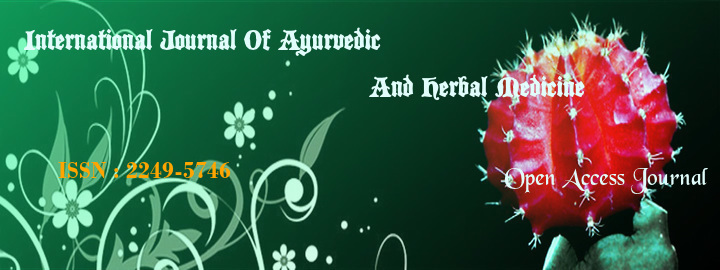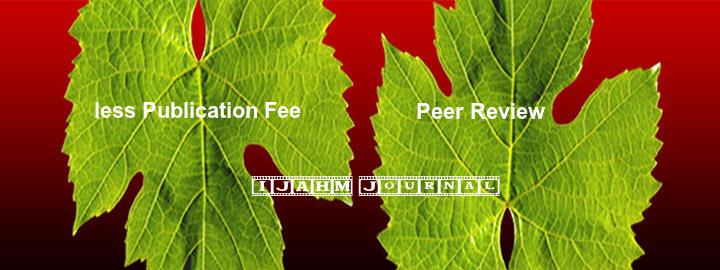


1Julika, 2Sharma Usha, 3Mitra Shuchi, 4Sharma Khemchand
DOI : http://dx.doi.org/10.31142/ijahm/v10i4.01
1MD. Scholar P.G. Deptt. Of Rasa Shastra and Bhaishajya kalpana Uttarakhand Ayurved University, Rishikul Campus
2Associate Professor P.G. Deptt. Of Rasa Shastra and Bhaishajya kalpana Uttarakhand Ayurved University, Rishikul Campus
3Associate Professor P.G. Deptt. Of Rasa Shastra and Bhaishajya kalpana Uttarakhand Ayurved University, Rishikul Campus
4Professor & H.O.D.P.G. Deptt. Of Rasa Shastra and Bhaishajya kalpana Uttarakhand Ayurved University, Rishikul Campus
*Corresponding Author- Julika
- ScholarP.G. Deptt. Of Rasa Shastra and Bhaishajya kalpanaUttarakhand Ayurved University, Rishikul Campus
ABSTRACT
‘Analysis’ means the detailed examination, which reveals the minor but important aspects regarding the drug. Analytical study of a product provides some standards to judge its quality. It is useful to decide future work plan and objective parameters to know the accurate status of a drug by conducting the comparative study of various samples during drug preparation. The important aims for analytical study of ayurvedic drugs are to know the particular chemical configuration and to point out the physico-chemical changes and effect of different processing (samskara e.g. shodhana, marana etc.) it also helps to know the probable role of a media during the pharmaceutical processing. Though analytical study one can interpret the probable pharmacokinetics and access the quality of selected material and final product. However, ayurvedic analytical techniques are not sufficient to answer the queries of modern science. Hence For better utilization of ayurvedic pharmaceutics, it is need of the hour to analyze the drug through both classical and modern qualitative and quantitative parameters. The quality of a dosage form should not only be tested at the end but must built into the product right from the moment of receipt of raw materials through processing until the final packaging. The Physico-chemical analysis provides the objective parameters to improvise the standards for quality of raw drugs as well as finished products.
Reference:
- The Ayurvedic Formulary of India, Part II: page no 91.
- Chakradutta commentator Inderdev Tripathi, Chapter 36/18.
- The Ayurvedic formulary of india part 1st 5:9.
- Roop K Khar, SP Vyas, Farhan J Ahmad, Gaurav K Jain Editors. Lachman/Lieberman’s The Theory and Practice of Industrial Pharmacy, CBS Publishers 4rth ed. 2014, pp 481.
- Appendix 2.5.3 of I.P. 2010 Uniformity of weight of single dose preparations.
- Appendix 2.5.5 of I.P. 2010 Friability of Uncoated tablets.
- Appendix 2.5.1 of I.P. 2010 Disintegration test.
- Appendix 3.3 of of A.P.I Part II (formulations).
- Appendix 2.2.10 of A.P.I. Part II vol. II.
- Appendix 2.2.3 of A.P.I. Part-II vol. II.
- Appendix 2.2.4 of A.P.I. Part-II vol. II.
- Appendix 2.2.7 of A.P.I. Part-II vol. II.
- Appendix 2.2.8 of A.P.I. Part-II vol. II.
- Appendix 2.4.2 of I.P. 2010
index






















